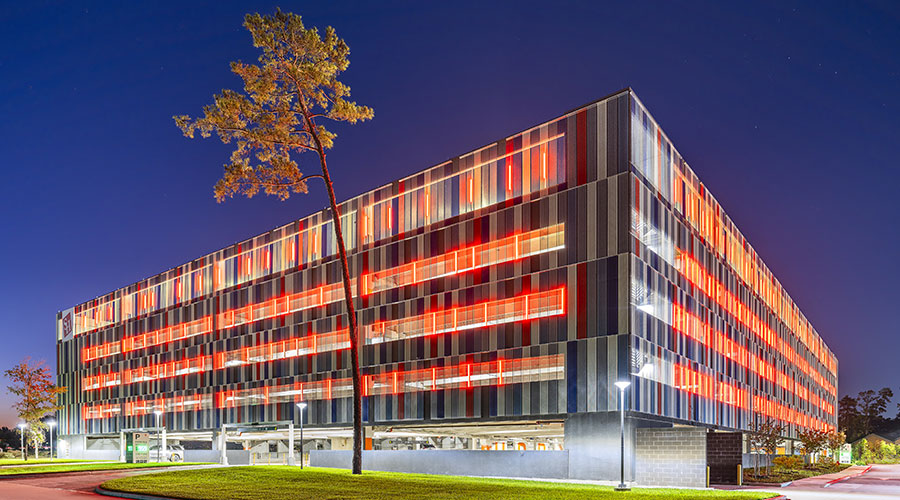Exterior Lighting Controls, Fixtures Can Reduce Energy Use and Provide Security
The challenge of outdoor lighting, even when specified for safety and security, is keeping the impact on the environment to a minimum. Whether it's sky glow, light trespass, glare or wasted energy, the effect that lighting can have on the environment can be substantial. Sky glow, or the increase of sky brightness, can make it difficult to see the stars. It can also confuse certain species of animals, including sea turtles and birds, lighting experts note. Light trespass, which is light spilling into a residential or commercial area, can be annoying, particularly to people trying to sleep. Glare can make it difficult to see, affecting the environment and the level of safety and security. And lighting that's not serving a purpose is a waste of energy.
"I think it's really an issue of people not using light in the most effective way," Diemer says. "It's sometimes like hitting the problem with a sledgehammer."
So how can building owners and facility managers have a safe, secure environment while also being good environmental stewards? One approach is to use sensors, which allow light to be used or concentrated in an area only when needed. Different types of lights take different amounts of time to turn on, so building owners and facility managers need to be aware of that so that individuals don't walk too far into a dark area before tripping the motion sensors, he says.
A motion detector combined with instant-strike capability, where lights become bright immediately with no warm-up period, provides another option. The lights on a pole can dim but as soon as someone approaches the pole, the lights brighten immediately, Salmon says. After staying on for a few minutes, the lights then revert to a dimmer level.
Cut-offs, or lights with hoods or other housing, help focus light straight downward. Full cut-off fixtures, as opposed to partial cut-off fixtures, won't project light above a 90-degree angle, keeping light trespass and sky glow to a minimum, Gandy says. "The larger the fixture or the higher the wattage, the more important cut-offs are," she says.
Securing a property more efficiently can lead to reduced light usage, Salmon says. A shopping mall may be using the maximum amount of lighting all night, even after everyone has departed. Pulling a crossbar down and cutting off access to the parking garage or parking lot means less light can be used in those areas, he says.
Desiree J. Hanford, a contributing editor for Building Operating Management, is a freelance writer who spent 10 years as a reporter for Dow Jones. She is a former assistant editor of Building Operating Management.
Related Topics:














